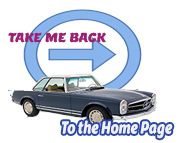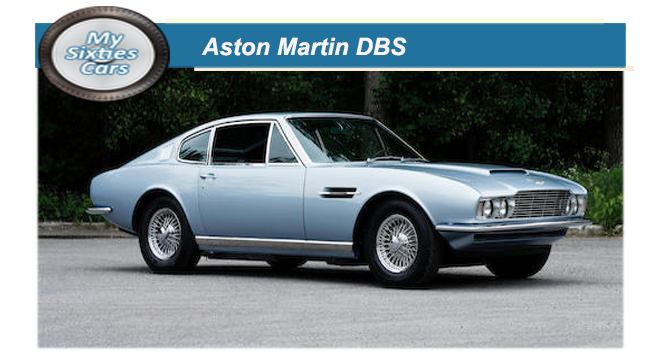
The design of the last Aston Martin of the Sixties, the DBS, was the fruit of the fertile brain of UK designer Bill Towns, who had " earned his spurs" working in-house first for the Rootes Group and later with Rover.
T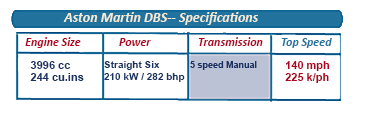 ownes succeeded in developing a model with a long overdue new look, a four-seat grand touring car providing a spacious interior, more storage space in the rear boot and improved all-round visibility.
ownes succeeded in developing a model with a long overdue new look, a four-seat grand touring car providing a spacious interior, more storage space in the rear boot and improved all-round visibility.
The DBS first made its appearance in the heady days of September 1967. Already intended to carry a V8 engine, due to technical hitches, the more powerful, and as it transpired, the more suitable engine wasn’t completed in time for the launch, meaning that the DBS car was released with the six-cylinder, 3,995 cc engine used in its predecessor the DB6.
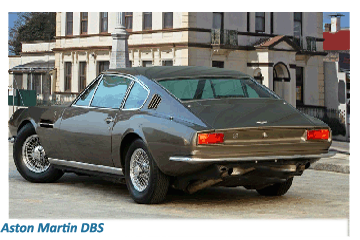 Not a single trace of the old Superleggera-style construction remained, this being a conventional body shell, skinned in¬light-alloy but with much steel out of sight. At this time, there was no provision for an alternative body style.
Not a single trace of the old Superleggera-style construction remained, this being a conventional body shell, skinned in¬light-alloy but with much steel out of sight. At this time, there was no provision for an alternative body style.
As a result of this increased weight, the DBS’s performance suffered in comparison with the DB6, although two years later Aston Martin succeeded in providing the option of a V8 engine, with the car being known as the DBS V8, capable of reaching a speed of 160 mph (265k/ph).
![]()
The DB's running gear was very similar to the DB6, with either 282bhp or 325bhp from the 3995cc engine, and with ZF manual or Borg Warner automatic transmission.
The Aston Martin DBS's front suspension was familiar (coil springs and wishbones) but the De Dion rear end was a new feature. In spite of the increased weight (37601b), power-assisted steering was still an optional extra.
A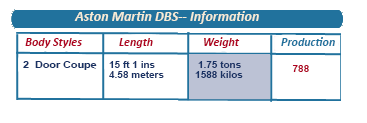 part from the differences in engine power and 4.5-inch wider wheel tracks, the most notable visual contrast with the DBSV8 were that it also came with specially designed 15’’ lightweight alloy wheels with ventilated brake discs.
part from the differences in engine power and 4.5-inch wider wheel tracks, the most notable visual contrast with the DBSV8 were that it also came with specially designed 15’’ lightweight alloy wheels with ventilated brake discs.
This marked another first for Aston Martin, an almost complete departure from the distinctive wire wheels that were a standard fixture on the DBS and its predecessors.
A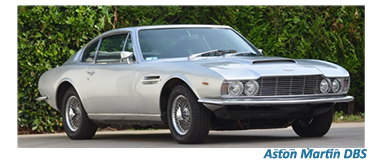 n additional and distinguishing feature of both the DBS and its V8 engined version DBSV8 versions were a set of four quartz iodine headlights perfectly enclosed in the Sixties adaptation of the iconic Aston Martin grille.
n additional and distinguishing feature of both the DBS and its V8 engined version DBSV8 versions were a set of four quartz iodine headlights perfectly enclosed in the Sixties adaptation of the iconic Aston Martin grille.
In a break from tradition established during the David Brown era, the arrival of the DBS did not immediately signal the end of the line for the DB6.
In fact, the two cars remained in production in tandem until early 1971.
![]()
The new body — broader and more angular than the DB6 — covered an almost-four-seater cabin, where leg room was very similar to the DB6, but the seats were all wider than before.
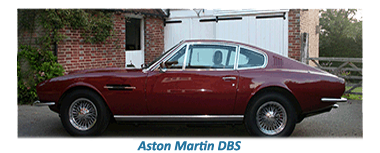 Four headlamps and a very horizontal grille motif were features.
Four headlamps and a very horizontal grille motif were features.
In the last year of the DBS's life, a two-headlamp nose took over from the original.
The general impression was that the DBS was just too vast and cumbersome for the size and capacity of its engine, invariably requiring all of its 325bhp to provide adequate performance.
Eventually, Aston Martin began to take some pity on DBS owners and came up with a long overdue power-assisted steering option, making for a car that was easier to drive hard than any other Aston Martin of the decade.


